What does boot flex mean?
The flex of a ski boot is a measure of the stiffness of the material and determines the force required to bend or deform the boot. This flex index generally ranges from 60 to 130. More flexible boots require less effort and are therefore suitable for beginners or recreational skiers, while stiffer boots offer more control and stability and are suitable for advanced skiers or racers.
Ski boot flex chart
| Beginner | Advanced | Expert | Competitive | |
| Flex Women | 60 - 90 | 90 - 110 | 110 - 120 | 130 + |
| Flex Men | 70 - 90 | 90 - 120 | 120 - 130 | 140 + |
| Sensation | soft | medium | hard | very hard |


Manufacturers generally offer boots with a flex between 60 and 130. The lower the number, the softer the boot. In other words, the less flex it has. For example, a boot with a flex of 120 is stiffer and less flexible, so it takes more effort to put pressure on the ski.
A softer flex (lower index) is recommended for beginners and those with less physical strength, as it provides easier handling and greater comfort.
A stiffer flex (higher index) is recommended for advanced riders and those with more physical strength. With the right riding style, it offers maximum control and stability at high speeds.
The difference in the flex index therefore lies in the stiffness of the material and the resulting responsiveness of the boot.
What determines the flex of a boot?
The flex of a ski boot is determined by the stiffness of the material from which the boot is made. This stiffness is determined by both the materials used and the construction of the boot itself. The stiffer the boot, the more support and control it offers, the softer the boot, the more flexibility and freedom of movement. The number of buckles on the boot and the strength of the collar strap also affect flex.

Why is the flex of a ski boot important?
The flex of the boot is important as this affects the performance, control and comfort of the rider.
Performance: Flex determines the transfer of power to the ski. The stiffer the boot, the more directly the power is transferred to the ski and the better the ski can be controlled, especially at higher speeds and with a more aggressive skiing style. The prerequisite is that you have the ability and power.
Control: A stiffer boot offers more stability and precision, allowing the skier to react faster and steer more precisely. This is particularly important for good skiers and racers who want maximum control over their skis.
Comfort: The flex also has an effect on the comfort of the ski boot. A softer flex offers more freedom of movement and flexibility, which can be more comfortable for beginners or recreational skiers. A boot that is too stiff, on the other hand, can be uncomfortable and tiring for this group.
In addition, individual skier characteristics are of great importance in the choice of boot flex.
Weight & height: These two factors will determine your choice of flex. A short, light person will benefit from a softer flex as it is easier to control with less effort. Conversely, a flex that is too soft can cause you to "float" in the boot. Power transmission is no longer optimised.
This is why some manufacturers offer special women's models with a softer flex.

The flex of a ski boot is not set in stone
The following external influences can also change the flex index of your boot:
Temperature: Temperature changes affect the flexibility of the material. In cold temperatures, boots can become stiffer, while in warmer temperatures they tend to become more flexible.
Age and wear: Over time and with use, the materials in a ski boot can wear out, which can lead to changes in flex. This is especially true of older or heavily used boots.
Manufacturer and model: Different manufacturers and models use different materials and constructions, which can affect the flex of the boot. A "90 flex" from one brand may feel different from a "90 flex" from another brand.
Children's boots and the flex index
The same applies to children's boots as it does to adults: flex is a function of performance level, weight and size.
Our smallest winter sports enthusiasts with boot sizes 22 - 34 have no flex in their boots. From boot size 35, this varies between 60 and 90.
Where can I find information about flex?
The flex of a ski boot model is usually indicated in the product name. For example, the Tecnica Cochise 130 DYN GW has a flex of 130. You can also find flex information in the product features on our product detail pages or use the dedicated flex filter value in our online shop. Of course, our staff in our three stores will be happy to advise you on the right model with the optimal flex for you.
- - 10 %
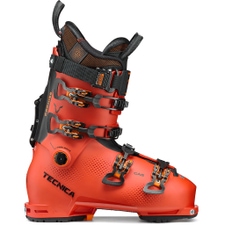 TecnicaCochise 130 DYN GW Ski Boots Brick Orange MenMSRP 699,95 €629,90 €Available Sizes:EU | UK | US | CM28,028,529,030,0
TecnicaCochise 130 DYN GW Ski Boots Brick Orange MenMSRP 699,95 €629,90 €Available Sizes:EU | UK | US | CM28,028,529,030,0
- - 26 %
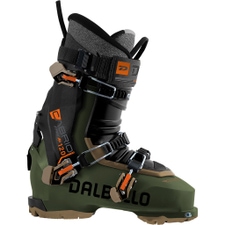 DalbelloCabrio LV Free 120 Ski Boots Moss Green / Black MenMSRP 679,95 €499,90 €Available Sizes:UK | US | CM25,527,5
DalbelloCabrio LV Free 120 Ski Boots Moss Green / Black MenMSRP 679,95 €499,90 €Available Sizes:UK | US | CM25,527,5
- - 30 %
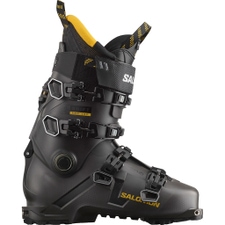 SalomonShift Pro 120 AT Ski Boots Belluga / Black / Solar Power MenMSRP 599,95 €419,90 €Available Sizes:EU | UK | US | CM24,529,530,5
SalomonShift Pro 120 AT Ski Boots Belluga / Black / Solar Power MenMSRP 599,95 €419,90 €Available Sizes:EU | UK | US | CM24,529,530,5
- - 34 %
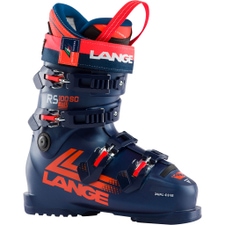 LangeRS 100 SC Wide Ski Boots Legend BlueMSRP 364,95 €239,90 €Available Sizes:23,524,525,527,528,5
LangeRS 100 SC Wide Ski Boots Legend BlueMSRP 364,95 €239,90 €Available Sizes:23,524,525,527,528,5 - - 20 %
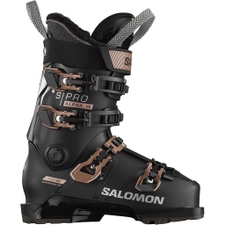 SalomonS/Pro Alpha 90 W Ski Boots Black / Pink Gold Metallic / Silver WomenMSRP 399,95 €319,90 €Available Sizes:EU | UK | US | CM23,525,5
SalomonS/Pro Alpha 90 W Ski Boots Black / Pink Gold Metallic / Silver WomenMSRP 399,95 €319,90 €Available Sizes:EU | UK | US | CM23,525,5
- - 27 %
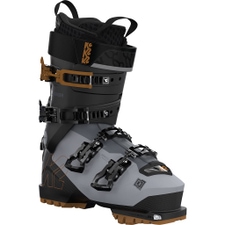 K2Mindbender 100 MV Ski Boots MenMSRP 549,95 €399,90 €Available Sizes:EU | UK | US | CM29,530,5
K2Mindbender 100 MV Ski Boots MenMSRP 549,95 €399,90 €Available Sizes:EU | UK | US | CM29,530,5




